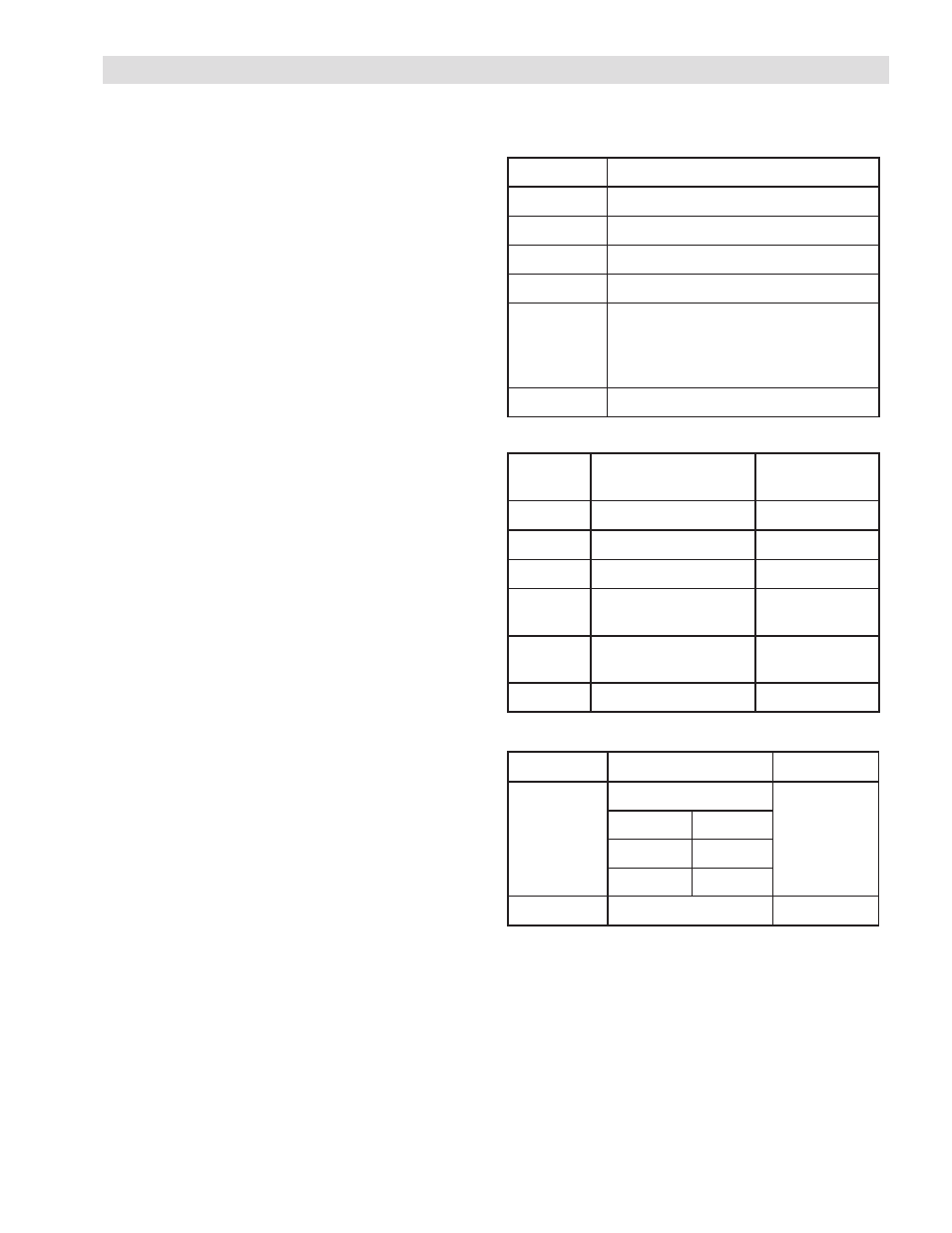Nexen RSD100 964520 User Manual
Page 27

FORM NO. L-21107-H-0108
1.0 aPPeNDIx
RS232 Communications can be used to broadcast arm
position and output percentage from the RSD100 to a
device such as a PLC or computer. At the same time, the
PLC or computer would control the Machine State and
Boost signals to the RSD100.
Serial Communication is achieved with RS232 through
a null modem cable. Data Transmission for each byte
follows the format “9600, N, 8, 1” (9600 Baud, No Parity,
8 data bits, 1 stop bit) with no handshaking. Data is
transmitted in 8 bit binary format, meaning that a number
0 to 255 is considered 1 byte and a number 0 to 65535
or -32676 to +32676 is considered two bytes. If a data
item is two bytes long, the MSB is sent/received first and
the LSB second.
Data is sent and received in Message Packets that are
comprised of bytes of information (Refer to Table 2).
The Checksum can be used as an error-checking tool
to confirm the data sent on one end is the same as the
data received on the other end. Use the Start byte to
designate the beginning of a new message packet as
well as the Stop byte to designate that the entire packet
was sent/received. The Packet Size is the number of
bytes in the packet, excluding the start and stop bytes.
•
For commands sent from a PLC/Computer to the
RSD100, refer to Table 4.
•
For commands and/or data sent from the RSD100 to
a PLC/Computer, refer to Table 5.
The Functional Test command can be used to confirm the
communications are working properly.
1. From a PLC/Computer, send a Functional Test mes-
sage packet (See Table 4).
2. If functioning properly, the RSD100 will immediately
send a Functional Test packet back to the PLC/Com-
puter (See Table 5).
The Machine State command operates like the Run/
Stopped (Maintained) signal (Refer to Machine State
Signal). The Rotary Mode Switch needs to be in the ‘1’
position.
B
YTE
N
UMBER
D
ESCRIPTION
1
e
t
y
B
t
r
a
t
S
1
o
t
l
a
u
q
e
e
u
l
a
v
,
2
e
z
i
S
t
e
k
c
a
P
p
o
t
S
&
tr
a
t
S
g
n
i
d
u
l
c
x
e
,
3
D
I
d
n
a
m
m
o
C
n
o
it
c
n
u
f
e
h
t
s
e
if
it
n
e
d
i
,
?
-
4
,
a
t
a
D
)
y
n
a
fi
(
h
t
g
n
e
l
e
l
b
a
ir
a
v
1
+
?
m
u
s
k
c
e
h
C
f
o
r
e
d
n
i
a
m
e
r
ti
g
i
d
-
o
w
t
e
h
t
,
e
h
t
f
o
n
o
it
a
m
m
u
s
e
h
t
f
o
n
o
i
s
i
v
i
d
e
h
t
0
0
1
h
ti
w
D
I
d
n
a
m
m
o
C
d
n
a
s
e
t
y
b
a
t
a
D
.]
0
0
1
D
O
M
)
D
I
d
n
a
m
m
o
C
+
a
t
a
D
(
.
e
.i
[
2
+
?
e
t
y
B
p
o
t
S
0
o
t
l
a
u
q
e
e
u
l
a
v
,
Table Message Packet Protocol
C
OMMAND
D
I
F
UNCTION
E
XAMPLE
8
a
t
a
D
g
n
it
s
a
c
d
a
o
r
B
tr
a
t
S
0
,
8
,
8
,
3
,
1
9
a
t
a
D
g
n
it
s
a
c
d
a
o
r
B
p
o
t
S
0
,
9
,
9
,
3
,
1
4
1
t
s
o
o
B
0
,
4
1
,
4
1
,
3
,
1
5
1
n
u
R
-
e
t
a
t
S
e
n
i
h
c
a
M
)
1
=
e
t
a
D
(
0
,
6
1
,
1
,
5
1
,
4
,
1
5
1
-
e
t
a
t
S
e
n
i
h
c
a
M
)
2
=
a
t
a
D
(
d
e
p
p
o
t
S
0
,
7
1
,
2
,
5
1
,
4
,
1
6
1
t
s
e
T
l
a
n
o
it
c
n
u
F
0
,
6
1
,
6
1
,
3
,
1
Table Message Packets for PLC/Computer to RSD
C
OMMAND
D
I
F
UNCTION
E
XAMPLE
8
a
t
a
D
t
s
a
c
d
a
o
r
B
e
v
i
e
c
e
R
,
a
t
a
D
,
8
,
7
,
1
0
,
m
u
s
k
c
e
h
C
a
t
a
D
e
g
n
a
R
n
o
it
i
s
o
P
m
r
A
0
0
0
1
-
0
t
u
p
t
u
O
0
0
0
1
-
0
6
1
t
s
e
T
l
a
n
o
it
c
n
u
F
0
,
6
1
,
6
1
,
3
,
1
Table Message Packets for RSD to PLC/Computer
c
OmmunicAtiOnS
p
ROtOcOl
